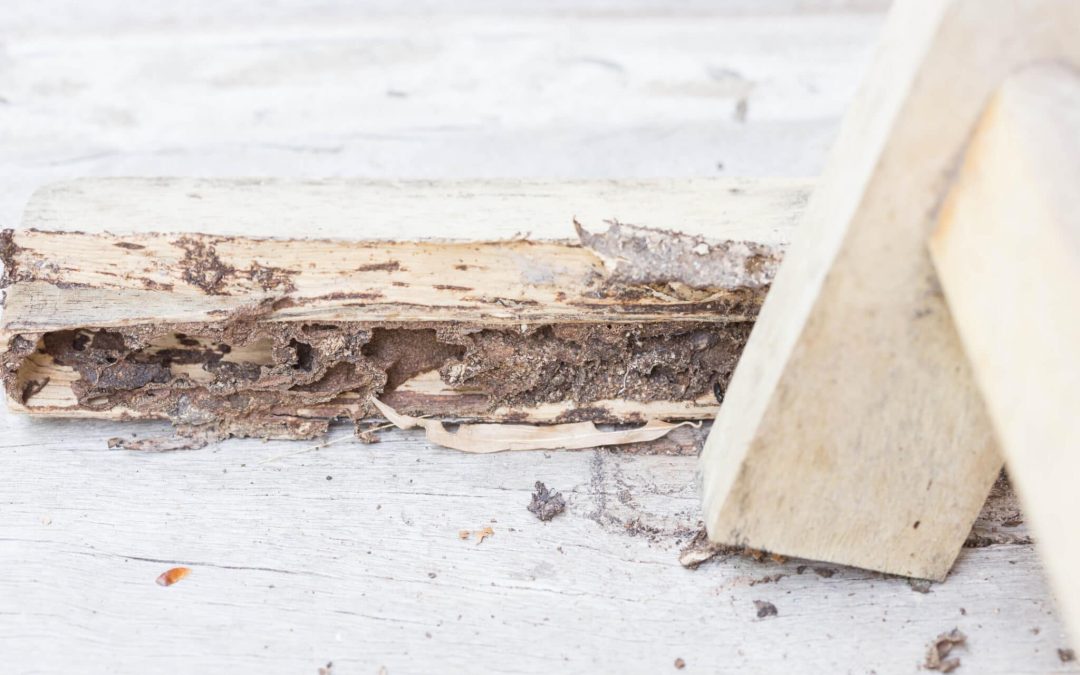Here in Georgia, the warm, humid climate are conditions perfect for year-round termite activity. Whether you’re buying a home, selling, or just trying to protect your biggest investment, termite prevention and awareness should be a top priority!
Below we review how to spot the signs of an active termite infestation, how to treat it, and most importantly, how to prevent it from ever happening in your home!
Signs Your Home May Have a Termite Infestation
Termites are often called “silent destroyers” because they chew through wood behind walls, floors, and foundations—often without any immediate visible signs. That’s why knowing what to look for is so important.
Here are the most common that termites have begun to invade your home:
- Mud Tubes on Walls or Foundations
Subterranean termites build pencil-thin mud tunnels to travel between their colony and food sources. These tubes are usually found along foundations, walls, crawl spaces, or basement joists.
- Hollow-Sounding or Damaged Wood
If you tap on a wooden beam or floor and it sounds hollow or breaks easily, termites may have eaten through it from the inside out.
- Discarded Wings
During swarming season (often in spring in Georgia), winged termites leave their colonies to start new ones. If you see piles of small, transparent wings near windowsills or doors, that’s a major red flag.
- Frass (Termite Droppings)
Drywood termites leave behind small, pellet-like droppings that resemble sawdust. You might notice these in piles beneath wooden furniture or baseboards.
- Swarming Termites Indoors
Winged termites inside your home, especially near light sources, almost always indicate an active infestation somewhere nearby.
Treating an Active Termite Infestation
- Start with a Professional Inspection
If you spot signs of termites, don’t wait. Call a licensed pest control specialist immediately. While you or a home inspector can identify evidence of infestation, a pest control expert is required to confirm the species and recommend the right treatment plan.
- Know Your Enemy: Common Termites in Georgia
Georgia homeowners typically deal with subterranean termites, but Formosan termites are becoming more common, especially in the southern part of the state. Here’s how treatment varies:
- Subterranean Termites: Best treated with liquid barrier soil treatments or bait stations that slowly eliminate the colony.
- Formosan Termites: These are aggressive and require professional baiting and soil treatment for full control.
- Drywood Termites: Less common in Georgia but treatable through spot applications or fumigation.
- Repair the Damage
Once treatment is complete, it’s critical to repair damaged structural components. Often, support beams, floor joists, and trim need replacing. Using treated or termite-resistant wood during these repairs helps prevent future issues.
Preventing Termites in Georgia Homes
Termite prevention is one of the most important long-term steps you can take as a homeowner. Here’s what is recommended based on occurs in Georgia homes every day:
- Control Moisture
Termites thrive in humid, damp environments. Make sure your gutters and downspouts are clear and directing water away from your foundation. Address leaky pipes, clogged HVAC lines, or roof leaks right away.
- Limit Wood-to-Ground Contact
Avoid letting decks, fence posts, or siding touch the soil directly. Maintain at least a 6-inch gap between soil and any wooden parts of your home. Keep firewood and mulch at least 20 feet away.
- Seal Gaps and Cracks
Caulk any gaps in your foundation or around utility lines. Install vent screens and cover foundation weep holes with fine mesh to help block access.
- Install a Termite Defense System
Speak to a licensed pest control provider about installing bait stations or applying a liquid soil treatment around your home. These systems act as proactive barriers to termite activity.
- Schedule Annual Termite Inspections
Even if there are no signs of termites, an annual inspection is essential in Georgia’s high-risk environment. Early detection is key to avoiding major repairs.
- Build and Repair With Termite-Resistant Materials
If you’re building or remodeling, use pressure-treated lumber or naturally resistant woods


Recent Comments